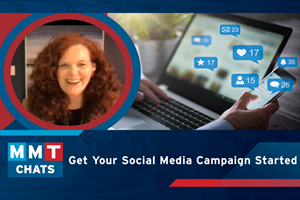Executive Decision Making in a Customer Centric Org, Part 2
We look at the remaining pitfalls that will dramatically limit an organization’s ability to stay on the curve relative to basic productivity as well as and to carve out a niche.
Last month we covered three pitfalls that interfere with fast, effective decision making: lack of a balance between a cost-cutting focus and a focus on revenue growth; lack of a communicated clear competitive strategy supported with customer VOC; and, lack of strong telemetry to understand the market and measure performance to plan in near real time. This month we will look at the remaining pitfalls that will dramatically limit an organization’s ability to stay on the curve relative to basic productivity as well as and to carve out a niche.
Pitfall #4: Failure to educate and begin to virtualize appropriate business processes.
Continuous technology education as noted in the telemetry discussion is now more critical than ever. Leading companies are investing in new technologies to expedite collection, transmission management and analysis of information and are pulling away from the pack. It has allowed the competition offshore to accelerate competitiveness by reducing time-to-market.
There is absolutely no reason we cannot attain parity or better against competition in this dimension, except for lack of visibility and perhaps a bit of intimidation when tackling unfamiliar modes of conducting business. Almost every business process is becoming virtualized and speeding execution, providing better telemetry and lowering costs. An intro to this is Young and Jude’s book published by Cisco Press, on “The Case for Virtual Business Processes”.
Pitfall #5: Lack of innovation.
While VOC will give you the wherewithal to impress the customer with solid understanding of their business needs, the rubber meets the road when you directly contribute to product or process innovation. A flow of contributions, timed in a way to integrate with the customer’s own development or business cycle, will unequivocally set you apart from the competition.
Innovation shows you engage to understand the business and technical challenges and invest resources to deliver solutions ahead of the competition. This investment is a real cost to you, extracted from the profit you receive from your services. It is one of the best investments you will make once the organization itself is properly aligned. Ultimately, innovation flows naturally from the type of organization you build. However, at first it requires serious effort to understand and effect the organizational changes that will then deliver this previously untapped value.
In the real world, cost remains critically important yet innovation levels the field and will move you to first place when value can be measured as a TCO, contribution of intellectual property to the value stream, time-to-market is reduced or design reliability is improved. At the end of the day, a supplier with the mindset to out innovate the competition will provide a higher quality product as an output of the operational transformation that will result. At some point, you will find a customer set that sees you are adding literally millions of dollars in value to their operation and will say “thank you” with their continued business.
Pitfall #6: Failure to honestly assess the competitive landscape and your team’s strengths and weaknesses.
One of the most important abilities is that of determining and acknowledging one’s strengths and weaknesses. If you know them, you can exploit them, target the best fit business opportunities, steer clear of where your organization would be challenged, and most importantly you can change to become the business you want to be.
I once worked with a company that spent a significant sum for a study on the primary reasons very large companies had stumbled over time and the long-term effect on those companies. As I read the report, I thought “we have some issues in at least half of the causal categories.” On the verge of failure 10 years later, the company was acquired, and what I fondly refer to as “a great social experiment” ended. Top management read the report yet acknowledged no real problems in any of the categories. Nonetheless, the reasons for the eventual failure were closely tied to the report, related mostly to ineffective decision making and failure to honestly reflect on let alone act upon appropriate internal and external telemetry. This anecdote demonstrates that the challenges are common: organizational behavior often follows historic trends; and honest reflection, assessment and preventive actions don’t happen naturally, but are a managed outcome as a result of committed leadership.
It’s even rarer to see this done effectively when things are still going well, but by the time the organization is in trouble it’s often too late to avoid a massive change in competitive position and valuation. The stock prices/value of high fliers collapse, more than likely never to fully recover, and everyone loses.
Conclusion
Next month we will take a deep dive into points five and six, understanding the importance of innovation, competition and your own organization’s strengths and weaknesses in formulating then executing capably on your strategy. We will ask some tough questions on what it will take for you to prosper in the coming economy.
Honest reflection and admission of factors—both internal and external—is often difficult and gut wrenching. It remains a constant executive responsibility, which now requires a more modern approach given the wealth of information available and tools/processes to manage it, and the rapid compression of cycle times in almost every aspect of the business. Timely, high quality, decisions will inevitably need to be made that will tweak strategy, management approach, resource deployment and the development process. These may lead simply to improved profitability and competitiveness, or be as fundamental as turning around or saving the business!
Related Content
ICYMI--MMT Chats: What's Happening to Our Industry? Time to Take a Stand for Plastics
MoldMaking Technology Editorial Director Christina Fuges chats with Bob Schiavone, Global Marketing Director for R&D/Leverage about his passion for manufacturing, marketing and the mission to change the perception of plastics. This episode is brought to you by ISCAR with New Ideas for Machining Intelligently.
Read MoreEditorial Guidelines: Editorial Advisory Board
The Editorial Advisory Board of MoldMaking Technology is made up of authorities with expertise within their respective business, industry, technology and profession. Their role is to advise on timely issues, trends, advances in the field, offer editorial thought and direction, review and comment on specific articles and generally act as a sounding board and a conscience for the publication.
Read MoreMMT Chats: Impressions and Inspirations from AMBA Event that “Shifts the View”
MoldMaking Technology Editorial Director and Managing Editor share their takeaways from a recent American Mold Builders Association Conference focused on leadership and mentorship in the moldmaking community. This episode is brought to you by ISCAR with New Ideas for Machining Intelligently.
Read MoreMMT Chats: Simple Steps to Get Your Social Media Campaign Started
MoldMaking Technology Editorial Director Christina Fuges catches up with Gail Now’s Chief Curiosity Officer Gail Robertson. We talk about the importance of using the curiosity tool to tell your stories as part of a marketing strategy that includes social media. This episode is brought to you by ISCAR with New Ideas for Machining Intelligently.
Read MoreRead Next
How to Use Continuing Education to Remain Competitive in Moldmaking
Continued training helps moldmakers make tooling decisions and properly use the latest cutting tool to efficiently machine high-quality molds.
Read MoreHow to Use Strategic Planning Tools, Data to Manage the Human Side of Business
Q&A with Marion Wells, MMT EAB member and founder of Human Asset Management.
Read More




_300x250 3.png;maxWidth=300;quality=90)







.jpg;maxWidth=300;quality=90)
.png;maxWidth=300;quality=90)








